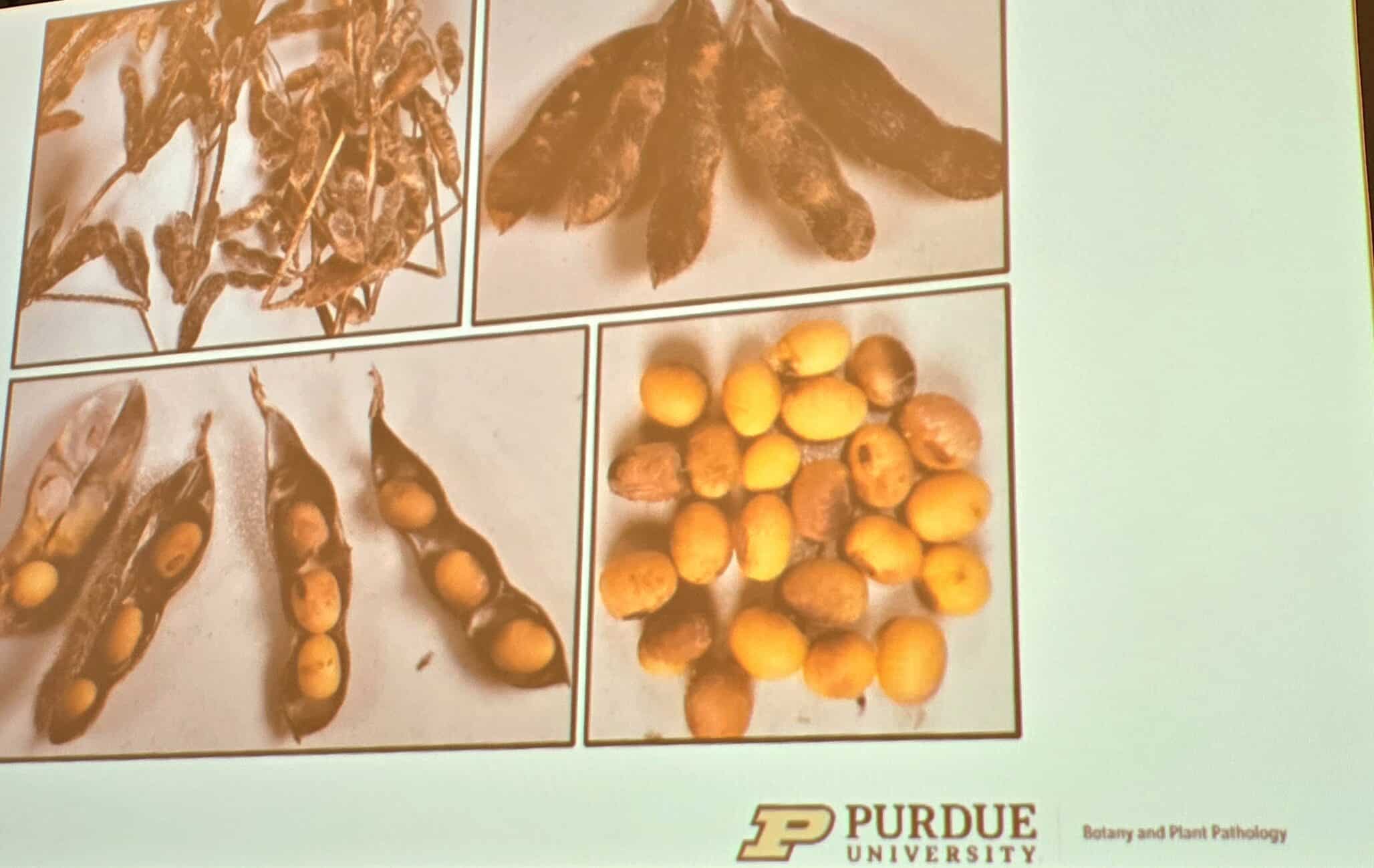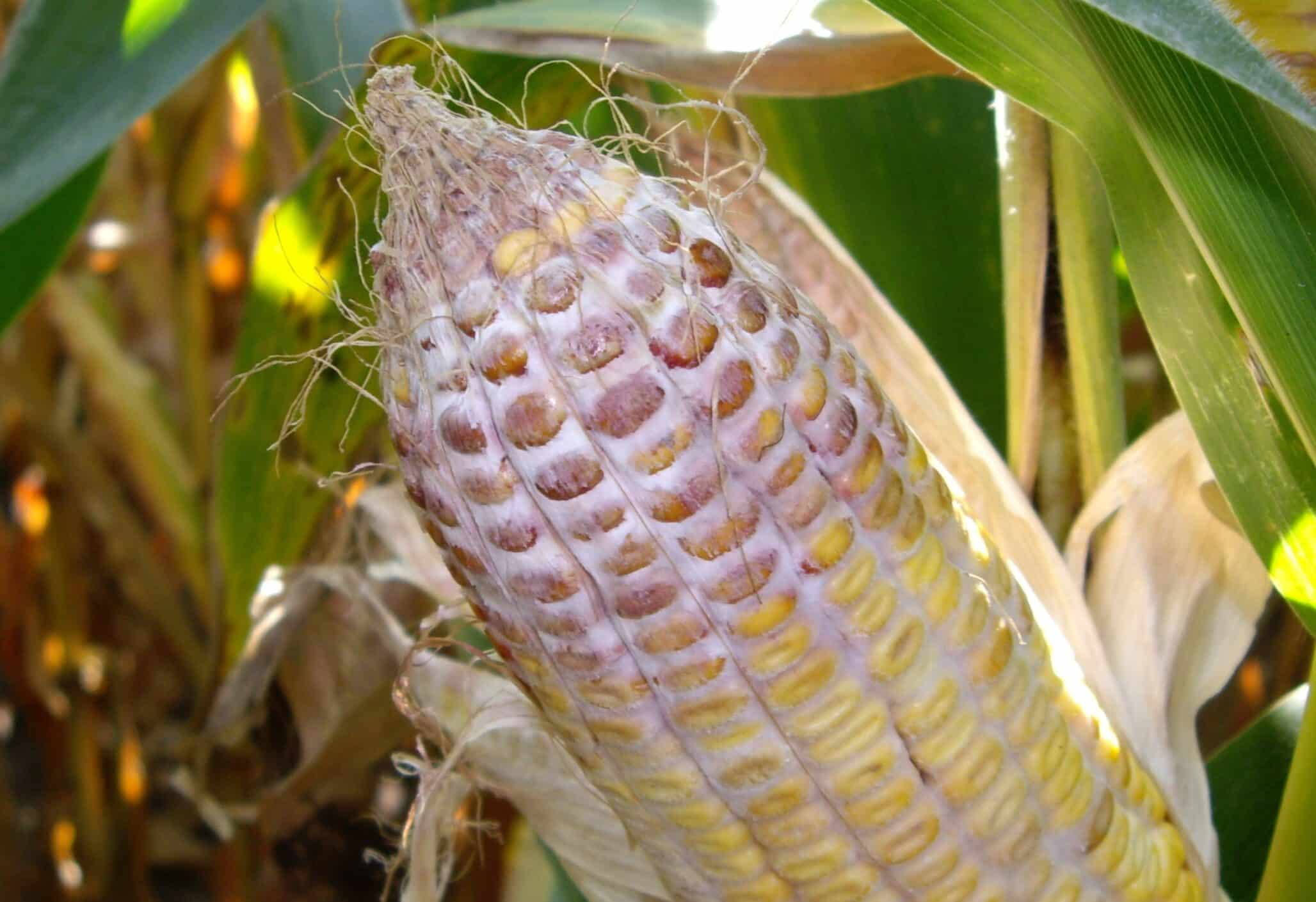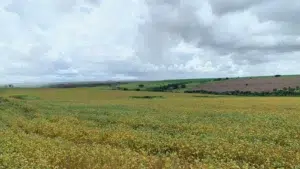Environmental factors, disease management strategies and the importance of scouting as emerging soybean pathogens challenge growers.
At the 2024 Corn Belt Seed Conference, Darcy Telenko, Purdue University assistant professor and extension field crop pathologist, provided an update on soybean diseases, highlighting key issues such as foliar pathogens and seed quality, with a particular focus on Red Crown Rot, an emerging threat in Indiana fields.
Telenko said soybean seed quality issues have resurged, a phenomenon she last observed in 2018.
“Soybeans have been really clean for me for our work, until this season,” she said, referring to the influx of disease samples seen at Purdue’s diagnostic lab.
Discussing the essential elements of plant disease development—the host, pathogen and environment—Telenko explained that environmental conditions often dictate disease prevalence.
“Sometimes we may have done everything right… but the environment was so favorable for that pathogen or that microbe that it didn’t matter,” she said. She underscored the need to monitor and manage pathogens that overwinter in crop debris, emphasizing the impact of favorable conditions on their resurgence.
She described how environmental factors, such as warm, wet weather, could amplify diseases, which may not always have economically beneficial management solutions.
“If we know what we’re working on, we can maybe select a variety that’s more resistant,” she stated, emphasizing the role of resistant varieties, rotation and fungicide timing in disease control strategies.
The Rise of Red Crown Rot
Telenko urged attendees to watch for Red Crown Rot, which can be mistaken for Sudden Death Syndrome (SDS) or Brown Stem Rot due to similar symptoms.
“This is not a new disease; it’s an old disease that’s was located in the South for a long time,” she said, noting its recent emergence in the Midwest. She said the South doesn’t have much of an issue with it now. She suggested looking to the industry in the South to find resistance options.
The disease presents unique challenges, including characteristic red lesions at the base of the plant, often leading to rapid deterioration of the root system.
“This plant, I grab it, it came right out of the ground, so that root system is gone,” she said about a crop devastated by Red Crown Rot.
She also highlighted the pathogen’s spread across Indiana, and now into Kentucky, suggesting that soil movement and water runoff play significant roles.
“We need to know, is it there? That’s what our diagnostic labs are there for,” Telenko urged, encouraging growers and industry professionals to submit samples and stay vigilant during the growing season.
Telenko offered strategies to minimize disease impact, such as seed treatment, rotation, and careful field management.
“Once you know it’s in an area in your field, you really need to be careful on moving it around… Let’s wash our equipment. Let’s harvest that area last,” she advised, stressing containment to prevent further spread.
As new pathogens and environmental conditions continue to challenge Midwest soybean production, Telenko emphasized ongoing research, collaboration and scouting to mitigate risks.
“It’s important to get out and determine what’s going on,” she said, reiterating the value of university resources and crop improvement associations in aiding with disease identification and management.













